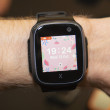Verizon Holiday Phones
The LG VX10000 Voyager is Verizon's new flagship media/messaging phone. It is clearly meant to be an iPhone competitor, with its touch screen interface and the similar appearance of its basic menu screens.
Body
There's no doubt that the Voyager is an attractive phone. Derived from the LG enV, the front face ditches the small screen and standard keypad for a large touch screen instead. It is attractive, elegant and simple all at the same time. Mostly black, ringed with silver (like another phone we know about), it is also about the same size as the enV, though slightly thinner. It definitely slips into a pocket easier than the enV did, and feels better in your hand. The materials are improved all around, and it is obvious LG spent some time putting on some nice touches.
Using the touch screen is satisfying, though not as satisfying as the iPhone. The response of the UI is slower than on the iPhone. It smudges just as easily, but provides microvibration feedback (haptics), which the iPhone does not. Below the screen are three buttons rather than one: the send, clear and power/end keys. Using the end key almost always aborts any program and takes you back to the home screen. The action of these keys is nice, though they can be hard to find, because they are blended into the grills for the stereo speakers. They do become illuminated when the phone is being used.
Opening up the Voyager, it is almost identical to the enV. The navigation cluster on the right is slightly updated with different materials, as are the keys, but the layout is practically a photocopy of the enV's hardware. The QWERTY keyboard was just as easy to use and permitting for quick entry of text. The action and feedback of each key was acceptable. The hinge was solid, and worked just like the hinge of the enV. It locked at a two-thirds position for viewing content and could be opened 180 degrees for composing pictures or video.
The camera is on the back in the same location as on the enV, and does not include a flash or good vanity mirror. The camera does have autofocus.
The buttons on the left side of the phone include the camera key, a lock key, and the volume/zoom toggle. They were all easy to find and use, though the camera key is a little small if you ask me. The microSD and data port hatches were no more difficult to use than any others we've encountered.
But enough of the hardware. Let's dig into that new user interface...
User Interface
If you are looking for an iPhone experience on the Voyager, prepare to be disappointed. Though it bares some similarities, there are also striking differences in the way the platforms work.
First off, it simply isn't as fast as the iPhone. The iPhone responds quicker and more delicately to input from your finger and the animations and applications are more well thought out. And the Voyager is not multi-touch. You can't zoom in and out of web sites or pictures like you can with the iPhone. Still, the UI on the Voyager's front screen is leaps and bounds better than what we're used to dealing with from Verizon phones.
The first thing you have to do when using the Voyager is to unlock it. The unlock icon appears in the exact same location as the iPhone's, but rather than slide it sideways, you just press it. The home screen appears somewhat similar to the iPhone's in that there are four icons present along the bottom that launch messaging, the phone app, the menu and contacts. The rest of the screen is blank (or whatever wallpaper you choose).
Tapping on any of the icons at the bottom brings up that application. The bottom right corner of most screens there is a clear key that takes you back a screen or out to the main menu. Depending on what application you are in, the rest of the navigation keys that appear along the bottom of the phone change and show appropriate options for that application.
If you simply hit the center of the screen, you'll get the full menu, which is some 16 or so different things. There is also a redundant menu key along the bottom of the phone, but rather than launch the full menu, it only shows the 8 most oft-used applications. These bigger icons are slightly easier to tap with your thumb than the smaller ones on the full menu.
Once the applications are open, they work similar to the way they would on any Verizon phone with its current platform. All the graphics and fonts have been updated (and trust us when we say this is a really good thing), but the overall underlying architecture of the operating system is sadly similar. Let's say you launch the messaging application. With it open, you'll see a list of options in the center of the screen. Along the top are icons representing the other applications and arrows to slide that selection sideways so you can jump to another application without having to go back to the main menu. The enV worked the same way.
The interior screen user interface, which is not touch sensitive, is almost identical to the enV's, though again all the graphics and fonts are changed. This is a major disappointment. While we didn't expect the device to have to touch screens, it would have been nice to see more elements of the touch interface transported to this interior screen.
Applications
The Voyager is fully compatible with all of Verizon's V CAST services, including the music store and mobile TV. It also has A-GPS and Verizon's VZnavigator app, music player that now supports unprotected AACs, a camera, video player, and full HTML browser.
The browser was not as impressive as we were hoping it would be. Granted, we we buried deep within a building in the middle of midtown Manhattan, but browsing speeds were slow, and pages were not all that quick to render, even with EV-DO coverage. Browsing with the phone closed is more iPhone-like, and lets you use the touchscreen to navigate to web sites. Slow as it was, this was still a much better experience than Verizon's Web 2.0 WAP browser. It was good to see the full version of Phone Scoop show up on the screen.
The camera is also great to use with the phone closed. You have the full screen to use to compose images, and you can fully interact with the menus on the touch screen. This makes it easy to make adjustments while shooting.
Conclusions
The Voyager definitely makes strides over the enV and other Verizon phones. Even at $250 or $300, it will likely be a pretty big hit, given its iPhone-like user interface and the full QWERTY keyboard to support messaging fanatics. It is much more elegant than the enV, and offers improvements that will make it enticing. Even so, we were hoping for a bit more improvements in the guts of the UI, and not just on the surface.
Here is a video preview of the Voyager. You can watch it here:
Or go to YouTube for more viewing and sharing options.


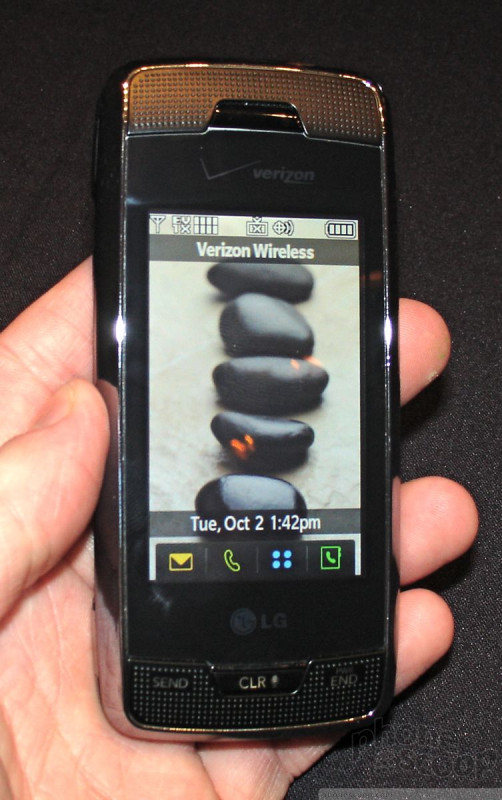











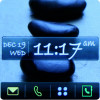 Review: LG Voyager
Review: LG Voyager
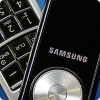 Review: Samsung Juke
Review: Samsung Juke
 Samsung Refreshes Galaxy S Series with S Pen, New Cameras
Samsung Refreshes Galaxy S Series with S Pen, New Cameras
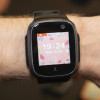 Hands On with Xplora Kids Smartwatches
Hands On with Xplora Kids Smartwatches
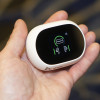 Hands On with Teams-Certified Bluetooth Earbuds
Hands On with Teams-Certified Bluetooth Earbuds
 LG Venus VX-8800
LG Venus VX-8800
 LG Voyager VX-10000
LG Voyager VX-10000
 Samsung Juke U470
Samsung Juke U470
